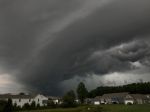A judge has awarded a US exhibition company $110m for salvaging artefacts from the wreck of the RMS Titanic.
The US federal judge ruled that RMS Titanic Inc, which displays the artefacts in museums across the world, is entitled to their full market value.
The court will decide whether to grant the company ownership of the objects or sell them and give it the proceeds.
The ship sank on its maiden voyage from Southampton to New York on 14 April, 1912, killing more than 1,500 people.
RMS Titanic Inc, a subsidiary of Premier Exhibitions Inc, has undertaken seven expeditions to the wreck site 2.5 miles (4km) below the north Atlantic, and has retrieved more than 5,500 artefacts.
The Belfast-built ship sank about 400 miles off the coast of Newfoundland, Canada, two hours after hitting an iceberg. It was discovered in 1985 by an expedition led by Dr Robert Ballard.
A US court granted the company salvage rights to the vessel in 1994 but explicitly stated it did not grant ownership of the wreck or the artefacts. The company has displayed the artefacts in museums across the world.
In Virginia on Thursday, US District Judge Rebecca Beach Smith found the company’s monumental effort to reach the wreck and to retrieve, conserve and exhibit the artefacts entitled it to the monetary award.
“The salvage of the Titanic has involved unprecedented feats of skill and dedication,” she wrote.
In deciding the 17-year old case, Judge Smith wrote she had relied on marine salvage law that had its genesis in ancient Greece 3,000 years ago.
She allowed the company to continue to display the artefacts but did not grant the company ownership of them.
She gave herself until 15 August, 2011 to decide whether to sell the artefacts through the court and give the company the proceeds or to give the company title to the objects after setting conditions for their maintenance and future disposition.
Read Full Story
Article courtesy bbc.co.uk
















